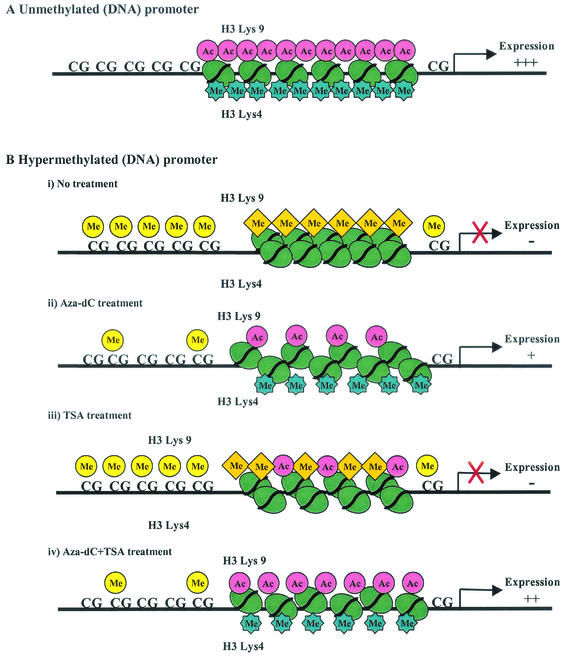FIG. 7.
A schematic representation of the proposed mechanism in the role of histone modifications in unmethylated and methylated promoters. (A) Unmethylated CpG promoter. Acetylation in histone H3 Lys-9 and methylation in Lys-4 result in an unfolded chromatin structure leading to gene expression. (B) Methylated CpG promoter. (i) Methylation in Lys-9 and no methylation in Lys-4 cause a repressive folded chromatin structure, leading to gene silencing. (ii) 5Aza-dC, which is a DNA demethylating agent, decreases Lys-9 methylation dramatically, increases Lys-9 acetylation slightly and Lys-4 methylation moderately, and reactivates gene expression. (iii) TSA increases Lys-9 acetylation but has no effect on Lys-9 methylation or Lys-4 methylation and does not relieve transcriptional silencing. (iv) The combination of 5Aza-dC and TSA decreases Lys-9 methylation and increases Lys-9 and Lys-4 methylation. The acetylation level for Lys-9 is higher than that observed when 5Aza-dC is used alone. The synergy between TSA and 5Aza-dC, which reactivate gene expression most effectively, can be explained by the markedly increased acetylation/methylation ratio achieved by the combination.

